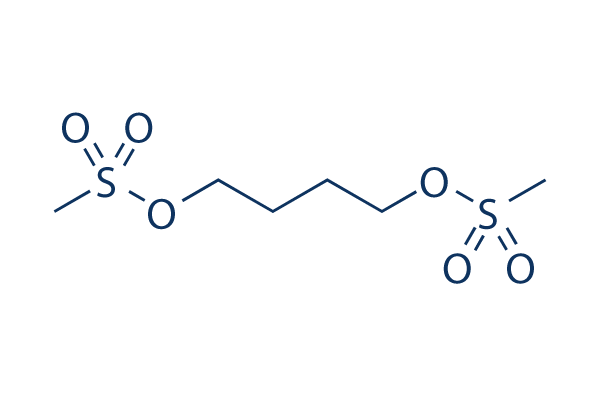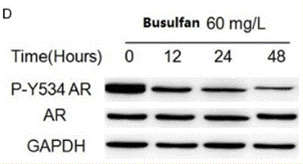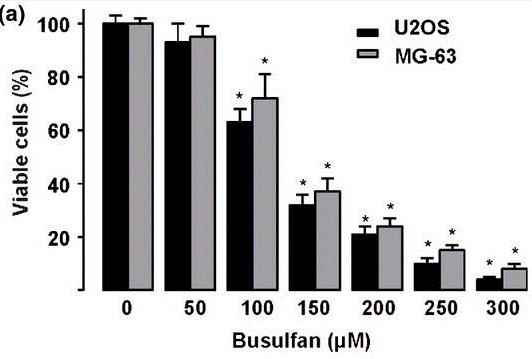
- Bioactive Compounds
- By Signaling Pathways
- PI3K/Akt/mTOR
- Epigenetics
- Methylation
- Immunology & Inflammation
- Protein Tyrosine Kinase
- Angiogenesis
- Apoptosis
- Autophagy
- ER stress & UPR
- JAK/STAT
- MAPK
- Cytoskeletal Signaling
- Cell Cycle
- TGF-beta/Smad
- DNA Damage/DNA Repair
- Compound Libraries
- Popular Compound Libraries
- Customize Library
- Clinical and FDA-approved Related
- Bioactive Compound Libraries
- Inhibitor Related
- Natural Product Related
- Metabolism Related
- Cell Death Related
- By Signaling Pathway
- By Disease
- Anti-infection and Antiviral Related
- Neuronal and Immunology Related
- Fragment and Covalent Related
- FDA-approved Drug Library
- FDA-approved & Passed Phase I Drug Library
- Preclinical/Clinical Compound Library
- Bioactive Compound Library-I
- Bioactive Compound Library-Ⅱ
- Kinase Inhibitor Library
- Express-Pick Library
- Natural Product Library
- Human Endogenous Metabolite Compound Library
- Alkaloid Compound LibraryNew
- Angiogenesis Related compound Library
- Anti-Aging Compound Library
- Anti-alzheimer Disease Compound Library
- Antibiotics compound Library
- Anti-cancer Compound Library
- Anti-cancer Compound Library-Ⅱ
- Anti-cancer Metabolism Compound Library
- Anti-Cardiovascular Disease Compound Library
- Anti-diabetic Compound Library
- Anti-infection Compound Library
- Antioxidant Compound Library
- Anti-parasitic Compound Library
- Antiviral Compound Library
- Apoptosis Compound Library
- Autophagy Compound Library
- Calcium Channel Blocker LibraryNew
- Cambridge Cancer Compound Library
- Carbohydrate Metabolism Compound LibraryNew
- Cell Cycle compound library
- CNS-Penetrant Compound Library
- Covalent Inhibitor Library
- Cytokine Inhibitor LibraryNew
- Cytoskeletal Signaling Pathway Compound Library
- DNA Damage/DNA Repair compound Library
- Drug-like Compound Library
- Endoplasmic Reticulum Stress Compound Library
- Epigenetics Compound Library
- Exosome Secretion Related Compound LibraryNew
- FDA-approved Anticancer Drug LibraryNew
- Ferroptosis Compound Library
- Flavonoid Compound Library
- Fragment Library
- Glutamine Metabolism Compound Library
- Glycolysis Compound Library
- GPCR Compound Library
- Gut Microbial Metabolite Library
- HIF-1 Signaling Pathway Compound Library
- Highly Selective Inhibitor Library
- Histone modification compound library
- HTS Library for Drug Discovery
- Human Hormone Related Compound LibraryNew
- Human Transcription Factor Compound LibraryNew
- Immunology/Inflammation Compound Library
- Inhibitor Library
- Ion Channel Ligand Library
- JAK/STAT compound library
- Lipid Metabolism Compound LibraryNew
- Macrocyclic Compound Library
- MAPK Inhibitor Library
- Medicine Food Homology Compound Library
- Metabolism Compound Library
- Methylation Compound Library
- Mouse Metabolite Compound LibraryNew
- Natural Organic Compound Library
- Neuronal Signaling Compound Library
- NF-κB Signaling Compound Library
- Nucleoside Analogue Library
- Obesity Compound Library
- Oxidative Stress Compound LibraryNew
- Plant Extract Library
- Phenotypic Screening Library
- PI3K/Akt Inhibitor Library
- Protease Inhibitor Library
- Protein-protein Interaction Inhibitor Library
- Pyroptosis Compound Library
- Small Molecule Immuno-Oncology Compound Library
- Mitochondria-Targeted Compound LibraryNew
- Stem Cell Differentiation Compound LibraryNew
- Stem Cell Signaling Compound Library
- Natural Phenol Compound LibraryNew
- Natural Terpenoid Compound LibraryNew
- TGF-beta/Smad compound library
- Traditional Chinese Medicine Library
- Tyrosine Kinase Inhibitor Library
- Ubiquitination Compound Library
-
Cherry Picking
You can personalize your library with chemicals from within Selleck's inventory. Build the right library for your research endeavors by choosing from compounds in all of our available libraries.
Please contact us at info@selleckchem.com to customize your library.
You could select:
- Antibodies
- Bioreagents
- qPCR
- 2x SYBR Green qPCR Master Mix
- 2x SYBR Green qPCR Master Mix(Low ROX)
- 2x SYBR Green qPCR Master Mix(High ROX)
- Protein Assay
- Protein A/G Magnetic Beads for IP
- Anti-Flag magnetic beads
- Anti-Flag Affinity Gel
- Anti-Myc magnetic beads
- Anti-HA magnetic beads
- Magnetic Separator
- Poly DYKDDDDK Tag Peptide lyophilized powder
- Protease Inhibitor Cocktail
- Protease Inhibitor Cocktail (EDTA-Free, 100X in DMSO)
- Phosphatase Inhibitor Cocktail (2 Tubes, 100X)
- Cell Biology
- Cell Counting Kit-8 (CCK-8)
- Animal Experiment
- Mouse Direct PCR Kit (For Genotyping)
- New Products
- Contact Us
Busulfan
Synonyms: NSC-750
Busulfan is a cell cycle non-specific alkylating antineoplastic agent. It causes DNA damage by cross-linking DNAs and DNA and proteins. Busulfan inhibits thioredoxin reductase activity. It also induces apoptosis. It is an immunosuppressive and myeloablative chemotherapeutic agent.Busulfan (NSC-750) can be used to induce animal models of Anemia.

Busulfan Chemical Structure
CAS No. 55-98-1
Purity & Quality Control
Batch:
Purity:
99.81%
99.81
Busulfan Related Products
| Related Targets | AGT | Click to Expand |
|---|---|---|
| Related Products | Lomeguatrib Methyl methanesulfonate Lobaplatin (D-19466) | Click to Expand |
| Related Compound Libraries | FDA-approved Drug Library Natural Product Library Apoptosis Compound Library DNA Damage/DNA Repair compound Library Cell Cycle compound library | Click to Expand |
Cell Data
| Cell Lines | Assay Type | Concentration | Incubation Time | Formulation | Activity Description | PMID |
|---|---|---|---|---|---|---|
| SK-N-SH cells | Proliferation assay | 10-100 μM | 72 h | Antiproliferative activity against human SK-N-SH cells at 10 to 100 uM after 72 hrs by MTT assay | 24814532 | |
| SiMa cells | Proliferation assay | 10-100 μM | 72 h | Antiproliferative activity against human SiMa cells at 10 to 100 uM after 72 hrs by MTT assay | 24814532 | |
| Kelly cells | Proliferation assay | 10-100 μM | 72 h | Antiproliferative activity against human Kelly cells at 10 to 100 uM after 72 hrs by MTT assay | 24814532 | |
| LS cells | Proliferation assay | 10-100 μM | 72 h | Antiproliferative activity against human LS cells at 10 to 100 uM after 72 hrs by MTT assay | 24814532 | |
| K562 | Apoptosis assay | 48 hrs | Induction of apoptosis in imatinib mesylate-resistant human K562 cells after 48 hrs | 18339455 | ||
| SK-N-MC | qHTS assay | qHTS of pediatric cancer cell lines to identify multiple opportunities for drug repurposing: Primary screen for SK-N-MC cells | 29435139 | |||
| NB-EBc1 | qHTS assay | qHTS of pediatric cancer cell lines to identify multiple opportunities for drug repurposing: Primary screen for NB-EBc1 cells | 29435139 | |||
| A673 | qHTS assay | qHTS of pediatric cancer cell lines to identify multiple opportunities for drug repurposing: Confirmatory screen for A673 cells) | 29435139 | |||
| Click to View More Cell Line Experimental Data | ||||||
Biological Activity
| Description | Busulfan is a cell cycle non-specific alkylating antineoplastic agent. It causes DNA damage by cross-linking DNAs and DNA and proteins. Busulfan inhibits thioredoxin reductase activity. It also induces apoptosis. It is an immunosuppressive and myeloablative chemotherapeutic agent.Busulfan (NSC-750) can be used to induce animal models of Anemia. |
|---|
| In vitro | ||||
| In vitro | Busulfan inhibits the cobblestone area-forming cell frequency but fails to cause a significant increase in apoptosis in hematopoietic stem cell alike cells and progenitors. Busulfan inhibits the hematopoietic function of HSC alike cells and progenitors via an apoptosis-independent mechanism. Busulfan induces bone marrow hematopoietic cell senescence associated with an increased expression of p16Ink4a and p19Arf in a time-dependent manner. [1] Busulfan, an alkylating agent that causes DNA damage by cross-linking DNAs and DNA and proteins, induces senescence in normal human diploid WI38 fibroblasts through the extracellular signal-regulated kinase (Erk) and p38 mitogen-activated protein kinase (p38 MAPK) cascade independent of the p53-DNA damage pathway. Busulfan induces a transient reduction in GSH but a continuous increase in ROS production. [2] Busulfan-induced hypophosphorylation of Rb prevents apoptosis of spermatogonial stem cells by inhibiting PCNA expression in testicular cells. [3] |
|||
|---|---|---|---|---|
| Experimental Result Images | Methods | Biomarkers | Images | PMID |
| Western blot | p-Y534 AR / AR Ack1 / Src |

|
27904688 | |
| Growth inhibition assay | Cell viability |

|
24815002 | |
| In Vivo | ||
| In vivo | Busulfan-treated mice exhibit a marked increase in apoptosis and a decrease in testis weight. Busulfan is administered at the rate of 40 mg/kg body weight to induce a maximal number of apoptotic cells while minimizing the number of necrotic cells. [3] Busulfan conditioning and irradiation results in comparable sensitivity of HSC detection as evaluated by limiting dilution analysis in NOD/SCID mice. [4] Busulfan-transplanted mice has slow and incomplete lymphoid engraftment. Busulfan (20 mg/kg to 100 mg/kg) provides dose-dependent congenic lymphoid reconstitution in mice. [5] |
|
|---|---|---|
| NCT Number | Recruitment | Conditions | Sponsor/Collaborators | Start Date | Phases |
|---|---|---|---|---|---|
| NCT04451200 | Not yet recruiting | Acute Leukemia|Mielodysplasic Syndrome|Myeloproliferative Neoplasm |
Institut Paoli-Calmettes |
November 2020 | Phase 2 |
| NCT03601286 | Recruiting | Severe Combined Immunodeficiency X-Linked |
Great Ormond Street Hospital for Children NHS Foundation Trust |
December 21 2018 | Phase 1 |
| NCT03235973 | Unknown status | Leukemia Myeloid Acute|Leukemia Lymphoblastic Acute |
Institut Paoli-Calmettes |
April 28 2018 | Phase 1 |
Chemical Information & Solubility
| Molecular Weight | 246.3 | Formula | C6H14O6S2 |
| CAS No. | 55-98-1 | SDF | Download Busulfan SDF |
| Density | 1.4 g/mL | ||
| Smiles | CS(=O)(=O)OCCCCOS(=O)(=O)C | ||
| Storage (From the date of receipt) | |||
|
In vitro |
DMSO : 49 mg/mL ( (198.94 mM) Moisture-absorbing DMSO reduces solubility. Please use fresh DMSO.) Water : Insoluble Ethanol : Insoluble |
Molecular Weight Calculator |
|
In vivo Add solvents to the product individually and in order. |
In vivo Formulation Calculator |
||||
Preparing Stock Solutions
Molarity Calculator
In vivo Formulation Calculator (Clear solution)
Step 1: Enter information below (Recommended: An additional animal making an allowance for loss during the experiment)
mg/kg
g
μL
Step 2: Enter the in vivo formulation (This is only the calculator, not formulation. Please contact us first if there is no in vivo formulation at the solubility Section.)
% DMSO
%
% Tween 80
% ddH2O
%DMSO
%
Calculation results:
Working concentration: mg/ml;
Method for preparing DMSO master liquid: mg drug pre-dissolved in μL DMSO ( Master liquid concentration mg/mL, Please contact us first if the concentration exceeds the DMSO solubility of the batch of drug. )
Method for preparing in vivo formulation: Take μL DMSO master liquid, next addμL PEG300, mix and clarify, next addμL Tween 80, mix and clarify, next add μL ddH2O, mix and clarify.
Method for preparing in vivo formulation: Take μL DMSO master liquid, next add μL Corn oil, mix and clarify.
Note: 1. Please make sure the liquid is clear before adding the next solvent.
2. Be sure to add the solvent(s) in order. You must ensure that the solution obtained, in the previous addition, is a clear solution before proceeding to add the next solvent. Physical methods such
as vortex, ultrasound or hot water bath can be used to aid dissolving.
Tech Support
Answers to questions you may have can be found in the inhibitor handling instructions. Topics include how to prepare stock solutions, how to store inhibitors, and issues that need special attention for cell-based assays and animal experiments.
Tel: +1-832-582-8158 Ext:3
If you have any other enquiries, please leave a message.
* Indicates a Required Field
Frequently Asked Questions
Question 1:
How can I reconstitute the drug for in vivo studies?
Answer:
This compound also can be dissolved in 2% DMSO+30% PEG 300+5% Tween 80+ddH2O at 5mg/ml as a clear solution. When preparing the solution, please dissolve the compound in DMSO clearly first. Then add PEG and Tween. After they mixed well, dilute with water. S1692 in this formulation is not suitable for long-term storage. Please make the fresh solution each time before use.
Tags: buy Busulfan | Busulfan ic50 | Busulfan price | Busulfan cost | Busulfan solubility dmso | Busulfan purchase | Busulfan manufacturer | Busulfan research buy | Busulfan order | Busulfan mouse | Busulfan chemical structure | Busulfan mw | Busulfan molecular weight | Busulfan datasheet | Busulfan supplier | Busulfan in vitro | Busulfan cell line | Busulfan concentration | Busulfan nmr






































